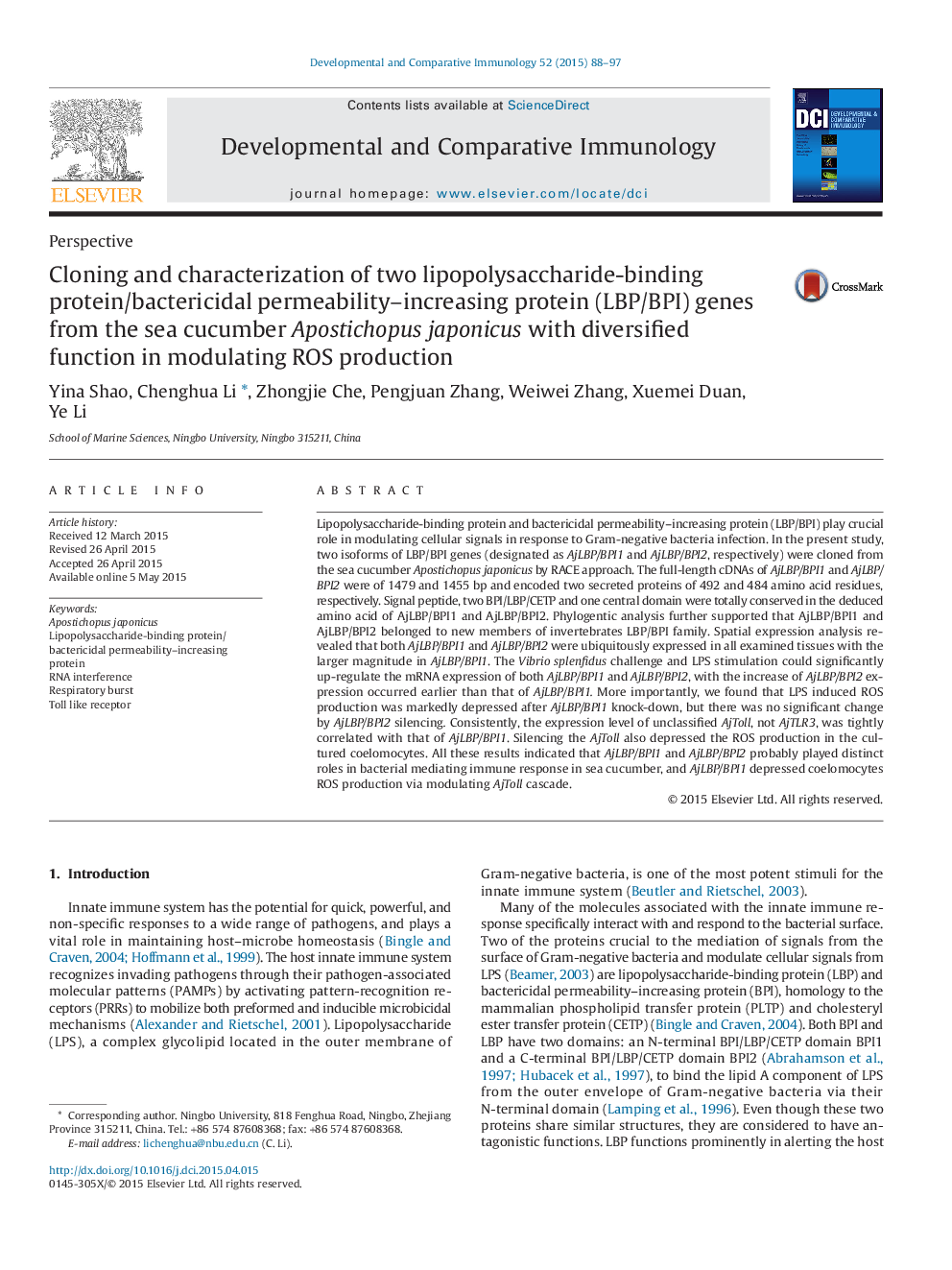| Article ID | Journal | Published Year | Pages | File Type |
|---|---|---|---|---|
| 2428955 | Developmental & Comparative Immunology | 2015 | 10 Pages |
•Two isoforms of AjLBP/BPIs were identified in Apostichopus japonicus.•AjLBP/BPI1 and AjLBP/BPI2 were ubiquitously expressed in all examined tissues.•ROS production was markedly depressed after AjLBP/BPI1, not AjLBP/BPI2 knock-down.•The expression level of AjToll, not AjTLR3, was tightly correlated with AjLBP/BPI1 expression.•Silencing the AjToll also depressed the ROS production in the cultured coelomocytes.
Lipopolysaccharide-binding protein and bactericidal permeability–increasing protein (LBP/BPI) play crucial role in modulating cellular signals in response to Gram-negative bacteria infection. In the present study, two isoforms of LBP/BPI genes (designated as AjLBP/BPI1 and AjLBP/BPI2, respectively) were cloned from the sea cucumber Apostichopus japonicus by RACE approach. The full-length cDNAs of AjLBP/BPI1 and AjLBP/BPI2 were of 1479 and 1455 bp and encoded two secreted proteins of 492 and 484 amino acid residues, respectively. Signal peptide, two BPI/LBP/CETP and one central domain were totally conserved in the deduced amino acid of AjLBP/BPI1 and AjLBP/BPI2. Phylogentic analysis further supported that AjLBP/BPI1 and AjLBP/BPI2 belonged to new members of invertebrates LBP/BPI family. Spatial expression analysis revealed that both AjLBP/BPI1 and AjLBP/BPI2 were ubiquitously expressed in all examined tissues with the larger magnitude in AjLBP/BPI1. The Vibrio splenfidus challenge and LPS stimulation could significantly up-regulate the mRNA expression of both AjLBP/BPI1 and AjLBP/BPI2, with the increase of AjLBP/BPI2 expression occurred earlier than that of AjLBP/BPI1. More importantly, we found that LPS induced ROS production was markedly depressed after AjLBP/BPI1 knock-down, but there was no significant change by AjLBP/BPI2 silencing. Consistently, the expression level of unclassified AjToll, not AjTLR3, was tightly correlated with that of AjLBP/BPI1. Silencing the AjToll also depressed the ROS production in the cultured coelomocytes. All these results indicated that AjLBP/BPI1 and AjLBP/BPI2 probably played distinct roles in bacterial mediating immune response in sea cucumber, and AjLBP/BPI1 depressed coelomocytes ROS production via modulating AjToll cascade.
